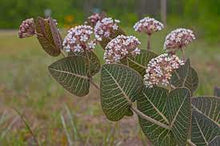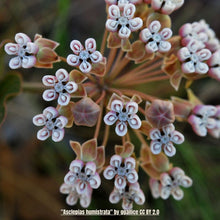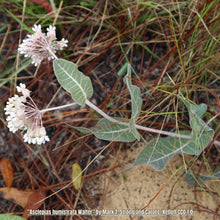Sandhill Milkweed (Asclepias humistrata) is a beautiful, showy long-lived perennial native wildflower endemic to the southeastern US and found as far south as Central Florida, where there is well-drained sand and full sun. This plant is also known as "Pinewoods milkweed" given it is often found in Pinewoods habitat and "Purple milkweed" because of its purple flower that bloom in spring and summer. Leaves are grayish-green with pink to lavender veins that tend to get darker to purple as the plant matures. Sandhill milkweed will die back in late fall through winter with its long tuber roots remaining underground and re-emerge in early spring. Due to the long tuber roots, it is difficult to transplant once established. This plant does best in moist to dry, well-drained sandy soil. This pretty native can be found growing up to 3' in sandhill, oak and pine habitats. Given its preference for upland habitats, it is not salt tolerant. The pink to whitish flowers attract many pollinators including wasps, bees and butterflies. This is a host plant for Monarchs, Queen and Soldier butterflies in Florida. As with all milkweeds, the sap is toxic and care should be taken if you get it on you to wash off and if you get it in your eyes, flush eyes immediately and possibly seek medical attention as the sap can cause temporary blindness if it gets in your eyes. If this plant is planted in excessively moist, poorly draining or rich soils it will not survive for long - it likes dry sandy well-draining soils.
/AC






